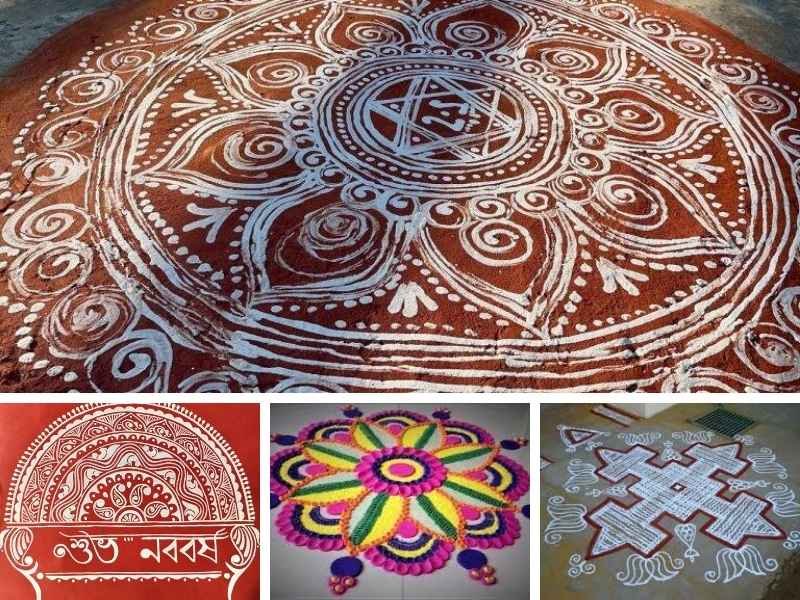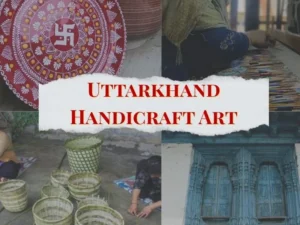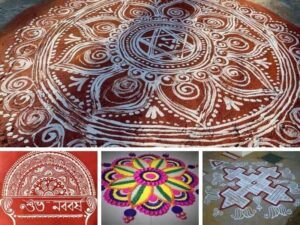“From Uttarakhand to South India, discover how India’s traditional floor art becomes a symbol of prosperity and culture in every home.”
Indian Folk Art
India is world-famous for its cultural diversity and folk arts. Among these, floor-painting or traditional floor art is a remarkable example, which not only decorates the home but also symbolizes prosperity, auspiciousness, and religious faith. Every state has its own unique style and name, such as Aipan in Uttarakhand, Alpona in Bengal, Mandala in Rajasthan, and Kolam in South India. These arts include geometric patterns, flowers and leaves, animals and birds, and religious symbols.
1. Aipan (in Uttarakhand) – Indian Folk Art
In the culture of Kumaon and Garhwal in Uttarakhand, Aipan art holds great significance. It is mainly created on the threshold, doorway, and during festivals. Aipan art includes geometric shapes, flowers and leaves, and religious symbols such as the conch shell, swastika, and Lord Ganesha. It is not just decoration but is also considered a symbol of auspiciousness and positive energy.
aipan art
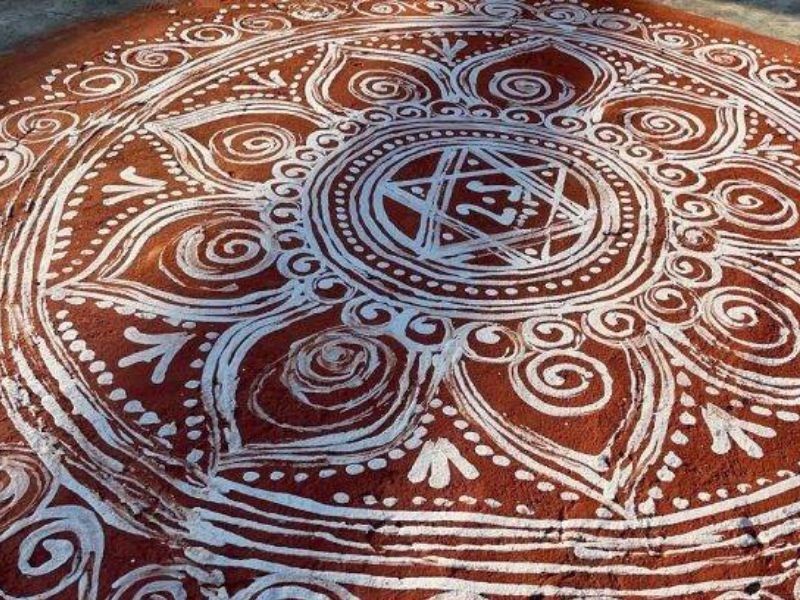
2. Alpona (in Bengal and Assam) – Indian Folk Art
Alpona is a major traditional art of Bengal and Assam. It is mainly made on the walls and floors of homes during festivals, weddings, and religious occasions. In Alpona, natural colors and lime are used to create various geometric and natural patterns. The artistic skill and patience of women are reflected in its making.
alpona bengal
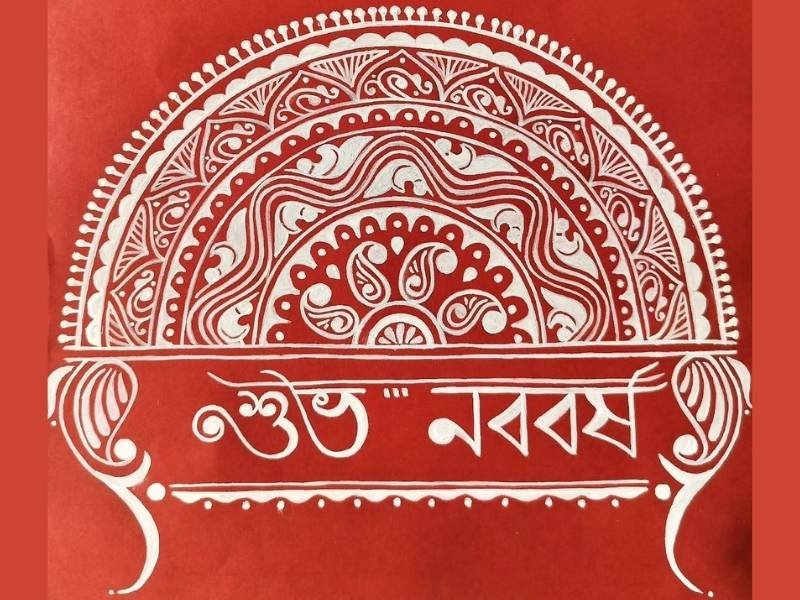
3. Aripana (in Bihar and Uttar Pradesh) – Indian Folk Art
Aripana is a popular floor-painting art of Bihar and Uttar Pradesh, created especially on thresholds during festivals and weddings for decoration. It generally uses lime and red color, with designs based on geometric shapes, flowers, and religious symbols. Aripana is considered a symbol of prosperity and auspicious occasions.
Aripana (in Bihar and Uttar Pradesh)
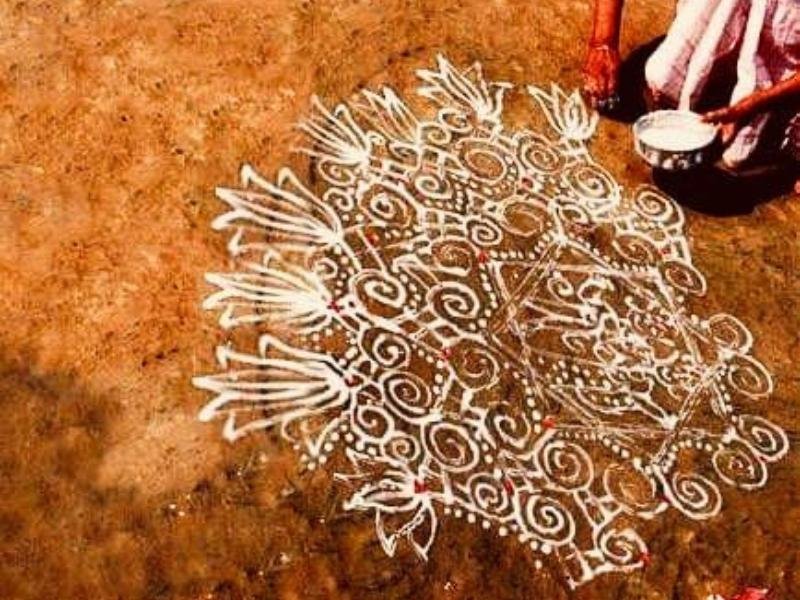
4. Mandana (in Rajasthan and Madhya Pradesh) – Indian Folk Art
Mandana is a famous traditional art of Rajasthan and Madhya Pradesh. It is drawn on the walls and floors of homes during special occasions. Mandana paintings include geometric shapes, flowers, animals, birds, and images of deities. This art is created not only for social and religious events but also to bring prosperity into the home.
mandala
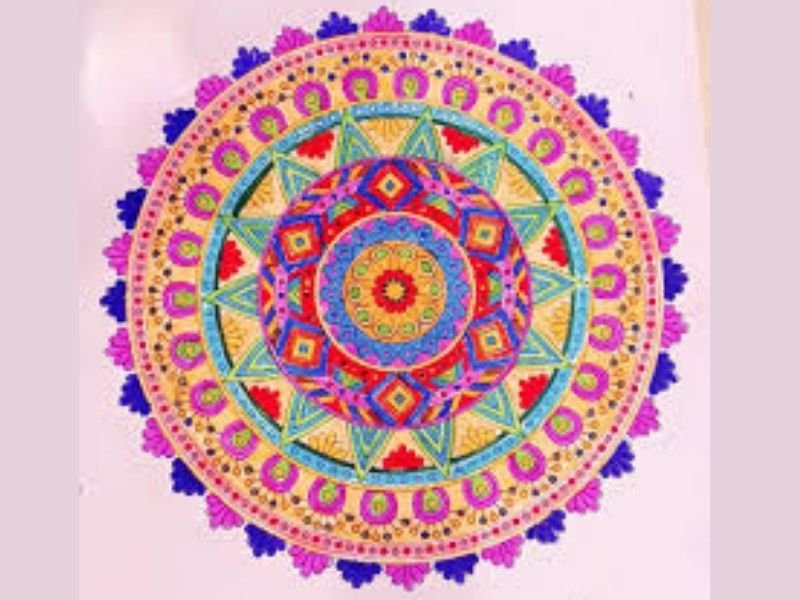
5. Rangoli (in Gujarat and Maharashtra) – Indian Folk Art
Rangoli is extremely popular in the western states of Gujarat and Maharashtra. It is mainly created on the floor with colorful powders during festivals such as Diwali, Ganesh Chaturthi, and weddings. Rangoli combines geometric, floral, and religious patterns, and is considered a symbol of prosperity and welcome.
rangoli
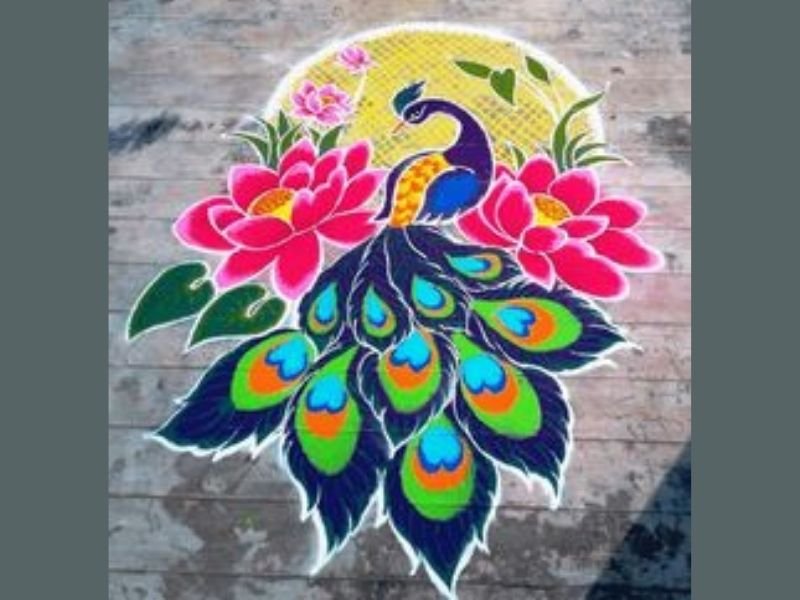
6. Kolam (in South India) – Indian Folk Art
Kolam is a major floor-painting art in South India, especially in Tamil Nadu, Karnataka, and Andhra Pradesh. It is mainly made with rice flour and drawn at the house entrance in the morning. Kolam is not only decoration but also plays an important role in rituals and religious beliefs.
Kolam (in South India)
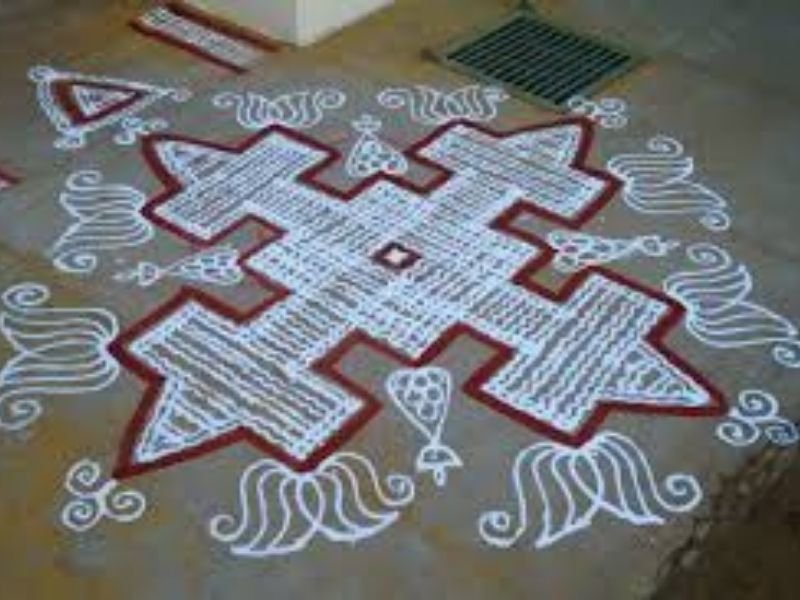
7. Muggu (in Andhra Pradesh) – Indian Folk Art
Muggu is a traditional floor art of Andhra Pradesh. It is made with rice flour or colored powders. Muggu is created on special occasions, festivals, and to bring auspiciousness into the home. It mainly includes geometric patterns, flowers, animals, birds, and religious symbols.
Muggu (in Andhra Pradesh)
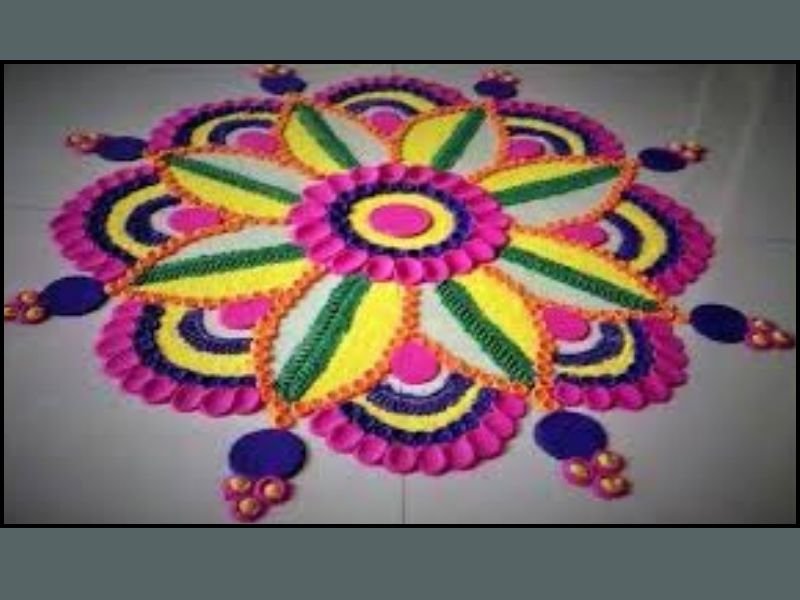
8. Alpana (in Odisha: Chita, Jhoti and Muruja) – Indian Folk Art
In Odisha, Alpana is known in different forms such as Chita, Jhoti, and Muruja. This art is mainly created on the walls and floors of homes during festivals, worship, and social events. It includes geometric, floral, and religious symbols. This art is considered a symbol of prosperity and auspiciousness in the home.
Alpana (in Odisha – Chita, Jhoti and Muruja)
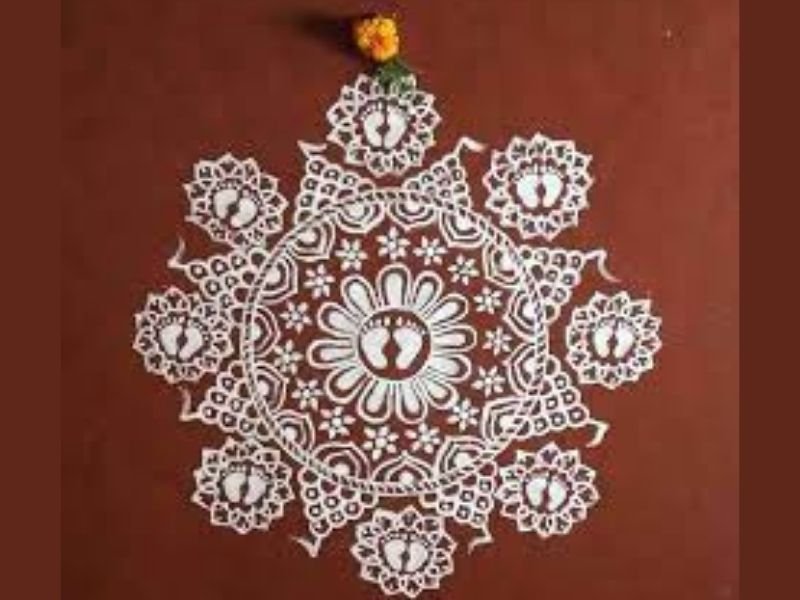
9. Madhubani Art
Madhubani art, also known as Mithila painting, is a traditional folk art form from the Mithila region of Bihar, India. Famous for its vibrant colors, intricate patterns, and themes of mythology, nature, and daily life, this art has been practiced for centuries—mainly by women. Today, Madhubani paintings are celebrated worldwide on walls, fabrics, and handicrafts, symbolizing India’s rich cultural heritage.
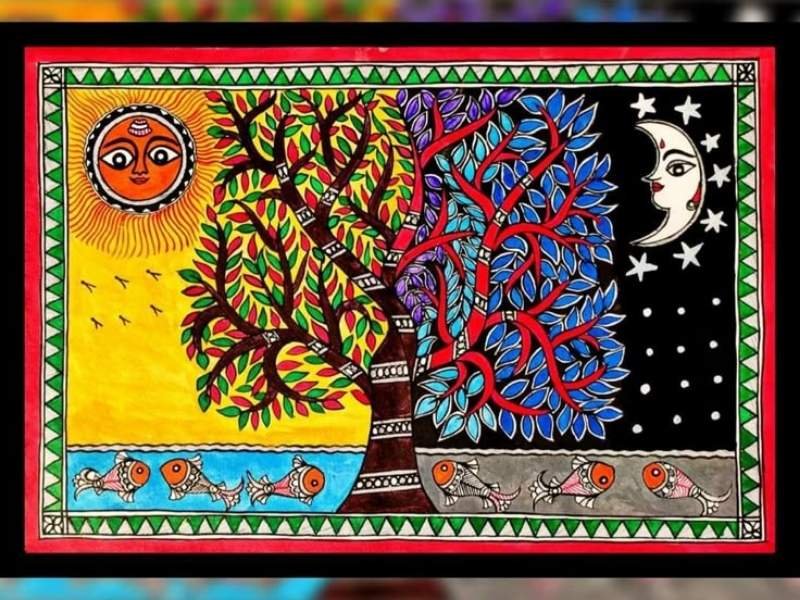
From Uttarakhand to South India, India’s traditional floor-painting art weaves a unique story of prosperity, culture, and colors in every home.
Conclusion
India’s traditional floor-painting Indian Folk Art is not merely a medium of decoration, but also a symbol of cultural heritage, religious faith, and prosperity. Uttarakhand’s Aipan, Bengal’s Alpona, Rajasthan’s Mandana, and South India’s Kolam—each art form reflects the unique tradition and history of its state.
Read This – What is Aipan Art?

